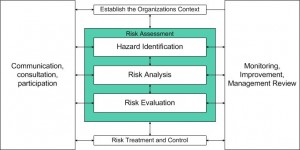Operation and maintenance of air pollution control equipment is often a source of the nonconformities we discover while performing both ISO 14001 EMS audits and Environmental Regulatory Compliance audits.
Clause 4.5.1 Monitoring and Measurement of ISO 14001 requires that organizations monitor and measure key characteristics of their environmental performance. An organization’s ability to control air pollution is one of these key performance characteristics, and the effectiveness of the organization’s air pollution control equipment is closely linked to this characteristic. Many of the legal requirements for air pollution control, including National Emission Standards for Hazardous Air Pollutants (NESHAP), also compel the proper operation and maintenance of pollution control devices.
Our audit experience shows that 50 percent or more of the organizations we audit are not as familiar with their air pollution control equipment as they could be, and as a result, are unable to show evidence during an audit that the equipment is, indeed, being operated and maintained according to the manufacturer’s specifications.
A simple example would be a paint booth that uses filters to control the particulate emissions from the painting operations. Booth manufacturers often specify a control efficiency of the booth, which is defined as the percentage of the particulate matter removed by the filters in the boot when the booth is being operated properly. Paint booth manufacturers also specify the types of filters to be used and the range of pressure drop across the filters, to ensure that the required control efficiency (98% as an example) is being achieved. During audits of paint booths, we often find that either the filters are not rated appropriately or the pressure drop across the filters is not being measured or recorded correctly.
A related issue is the ISO requirement (also Clause 4.5.1) that the instruments used to measure performance must be periodically calibrated. We find that pressure drop manometers or Magnehelic gauges are often not on a preventive maintenance schedule for calibration and/or replacement. Including the inspection of the pollution control equipment on a preventive maintenance schedule will help to ensure proper operation and maintenance of the equipment. As a risk management strategy, the ISO 14001 internal audit program should include a review of evidence that the scheduled maintenance has been performed and that the equipment is operating correctly.
If we can assist you in preparing for your ISO 14001 EMS audits and/or your Environmental Regulatory Compliance audits, or if you have any comments, questions, or concerns regarding your air pollution control equipment, please feel free to call us, at 920-648-4134, or e-mail us, at kalehner@envcompsys.com.
 It turned out that the ice on our local lake is almost 3 feet thick and it took over 3 hours to cut a 3′ x 6′ hole. At the time they started diving the outside air temperature was about 9 degrees F and dropping. The entire idea of ice diving offended every sensibility. Its just not right!
It turned out that the ice on our local lake is almost 3 feet thick and it took over 3 hours to cut a 3′ x 6′ hole. At the time they started diving the outside air temperature was about 9 degrees F and dropping. The entire idea of ice diving offended every sensibility. Its just not right!





